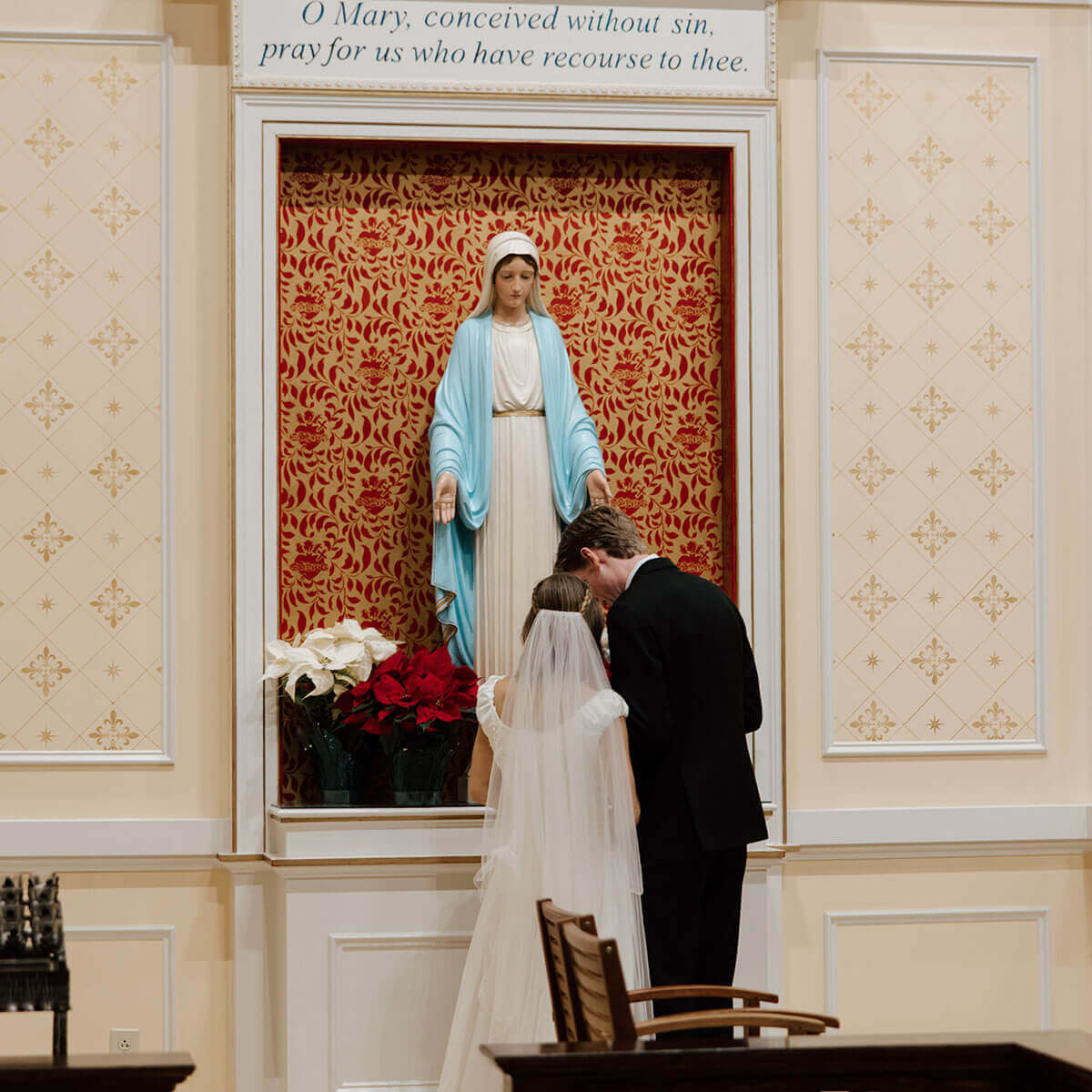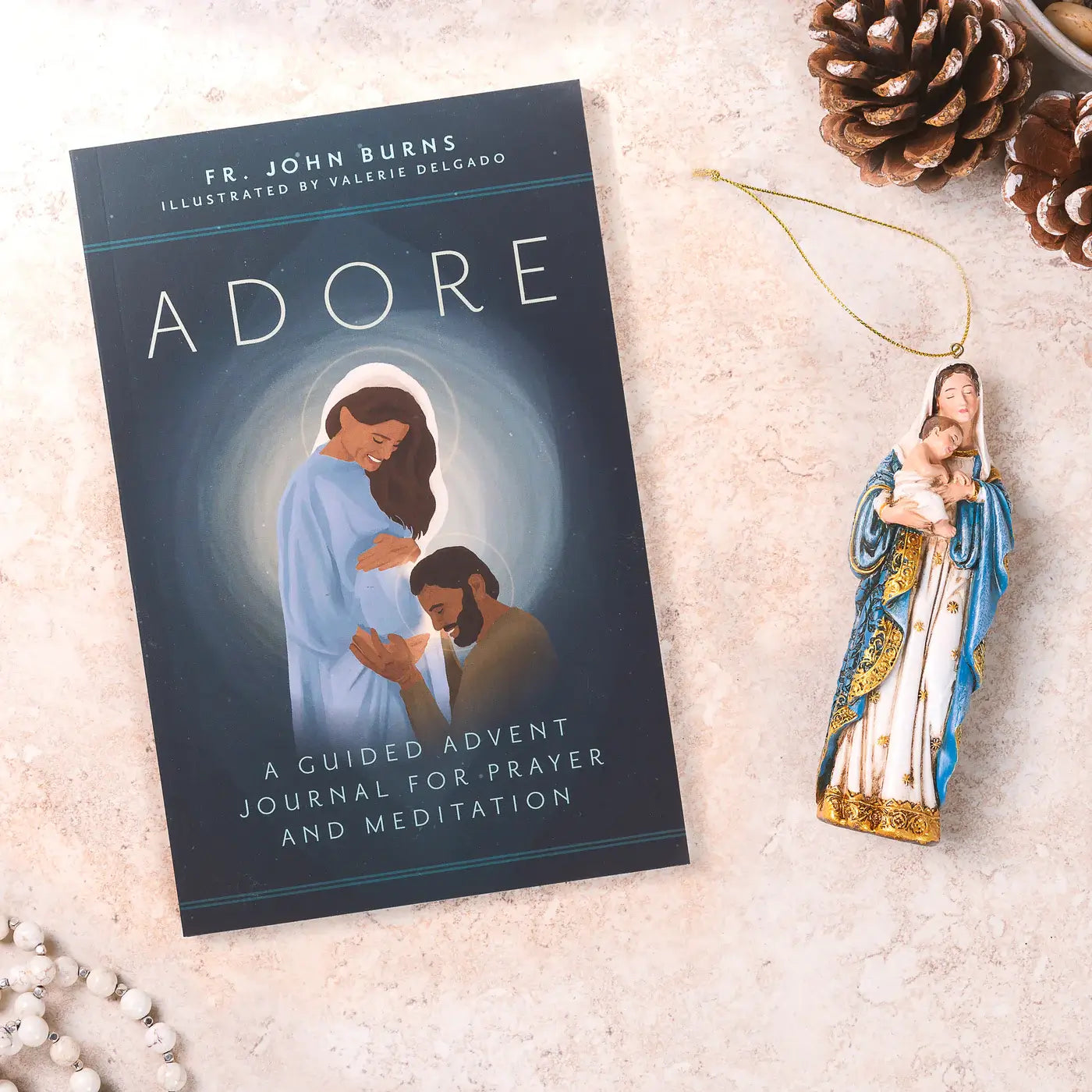Every Catholic should have a copy of the Bible in his home. Which translation of the Catholic Bible you choose will depend on the style you are looking for. Some prefer the more traditional form of the Douay-Rheims, while others may prefer the easy approach of the New American Bible.
We hope this breakdown of the different Catholic Bibles helps you find the right one to suit your needs.
Douay-Rheims
From 1749-1752 A.D the Latin Vulgate Bible, which was translated by St. Jerome in the 4th century, was revised by Bishop Challoner and, after careful comparison, it became the Douay-Rheims Bible. To this day it is considered the most beautiful and accurate English translation of the Bible. The rich tradition of the Douay-Rheims makes it ideal for Catholics who enjoy history, as well as a more classical writing style. Latin Missals commonly use this Bible translation.
Revised Standard Version (RSV)
The Revised Standard Version (RSV) or Revised Standard Version-Catholic Edition (RSV-CE), also known as the Ignatius Bible was completed in 1966 and is based on the 1962 printing of the Protestant RSV. In 2006, after negotiations with the National Council of Churches, Ignatius Press printed a second edition of the RSV. This version replaced the archaic language with modern words and included some revisions requested by the Vatican. The modern language and informative commentary notes make the Revised Standard Version-Catholic Edition popular among Catholics with an interest in studying the Bible. Additionally, the notes pay particular attention to important passages and how they differ from that of the Protestant Bible.
Navarre Bible
Josemaria Escriva, the founder of Opus Dei, began a project to combine texts from both the Revised Standard Version and the Latin Vulgate Bible into one, the Navarre Bible. Put together by faculty at the University of Navarre in Spain, this Bible includes explanations and commentaries on biblical passages making it ideal for Bible studies. Typically, the Navarre Bible has been published in separate volumes, but one can also obtain the New Testament in either a single compact volume or a larger volume. Due to its limited space, the compact version omits the Vulgate text, and simplifies the commentaries. The larger New Testament volume allows room for the Vulgate, as well as longer and more detailed commentaries. Using Church documents, papers written by Early Fathers and Doctors of the Church, as well as modern spiritual writers, the faculty at Navarre provided intellectual, and historical insight to the commentaries. The Navarre Bible is considered one of the best Catholic commentaries.
New American Bible (NAB)
The New American Bible (NAB), originally published in 1970, evolved from the Confraternity Bible. The American bishops disliked this version and, in 1986, proceeded to re-translate the New Testament and publish a new version. The Vatican did not approve of the inclusive language in this translation and had the scriptural portions revised so that it could still be used in the liturgy. The bishops then updated the NAB to the Revised New American Bible (RNAB), but the Vatican disagreed with the changes and made corrections. This final version became the Amended Revised New American Bible (ARNAB) and is one of the three translations approved for Catholic liturgical use. One of the easiest versions of the Bible to understand, the New American Bible is perfect for everyday use. For this reason, it is especially popular among Catholic students and those who are new to reading Bible. See our upcoming post on the updated New American Bible Revised Edition (NABRE).
Some more general information about the Catholic Bible:
The Catholic Bible includes books from both the Old and New Testaments. However, unlike the Old Testament of the Protestant Bible, the Catholic Bible retained the books of Tobias, Judith, Wisdom, Ecclesiasticus, Baruch, First and Second Machabees, as well as the entire books of both Esther and Daniel (parts of which the Protestant Bible omits).
These several books, which are missing from both the Hebrew Bible and the Protestant Bible, were originally known as the Septuagint and were a pre-Christian Greek translation of the Old Testament. The Catholic Bible includes these books, now called the Deuterocanonical by Catholics, in addition to the Hebrew Old Testament. Since the Hebrew books are older, they are called the first canon or collection, and are placed ahead of the Deuterocanonical books, which are called the second canon or collection.
As for the New Testament, the differences are minute, though they are just as important. The writers of the Protestant Bible chose to alter specific passages throughout the books of the New Testament. Though the subtly different words or phrases may not be immediately obvious, they drastically change the meaning of the passage.





















